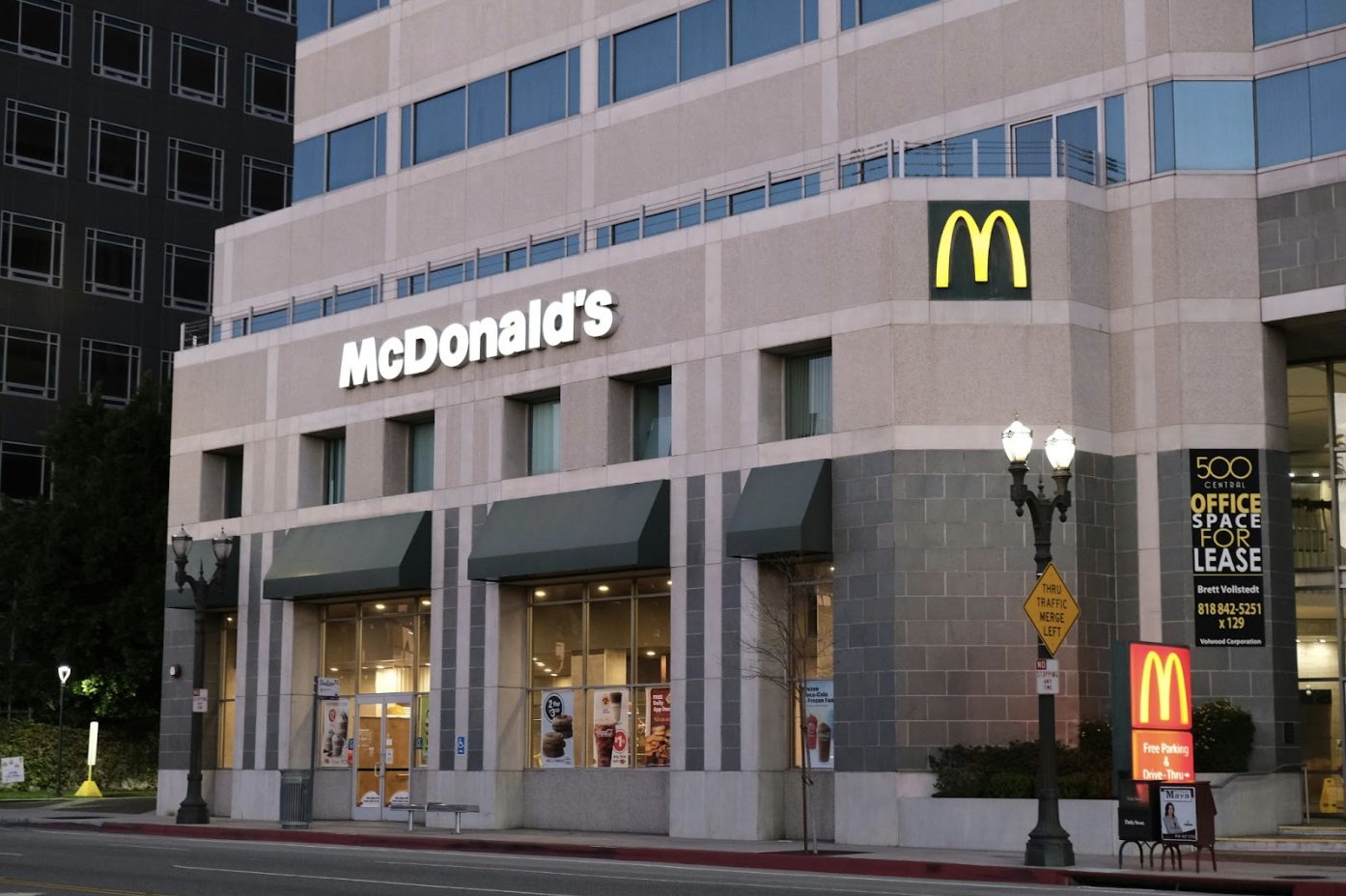Traditional advertising on Google or Meta can often feel like yelling orders in a crowded fast food restaurant: It's noisy, overpriced, and rarely effective. But there are alternatives, as the global fast food chain McDonald's clearly shows.
McDonald's has perfected high-impact marketing efforts that consistently convert across their global market, from localized menus in India to Gen Z influencer collabs.
Analyzing McDonald's playbook reveals ways to turn market segmentation, digital innovation, and smart pricing tactics into results-driven strategies that lift real ROI.
Let's break down seven actionable insights from McDonald's marketing model and what even digital marketing experts can learn to drive measurable performance without wasted spend.
Core Elements of McDonald's Marketing Strategy
McDonald's global dominance of the fast food industry comes from balancing universal brand consistency with local customization to drive customer satisfaction and familiarity. The iconic brand assets, such as the Golden Arches and the catchy "I'm Lovin' It" jingle, build familiarity and trust from Texas to Tokyo. Meanwhile, adapting menus and messaging to local tastes, like India's McAloo Tikki burger and halal certification in Middle Eastern markets, resonate with regional customer preferences.
Franchising: A Scalable and Profitable Expansion Model
The franchising model is another key part of the fast food chain's marketing strategies. By scaling quickly through local franchisees, the company reduces risk while maximizing penetration, creating a repeatable, profitable expansion blueprint. This model means McDonald's can maintain global standards while allowing their franchisees to meaningfully engage local communities.
Audience Segmentation for Maximum Impact
Campaigns that successfully segment their audiences are just as critical to McDonald's marketing strategy. Collabs with artists like Travis Scott and BTS generate cultural moments for Gen Z and Millennial customers across social media platforms that translate into measurable ROI. Family-oriented promotions like Happy Meals and nostalgia-driven campaigns deepen emotional connections, driving long-term loyalty. Meanwhile, responding to wellness-conscious customers with healthier menu options and transparent nutritional information allows McDonald's to broaden their appeal into new markets.
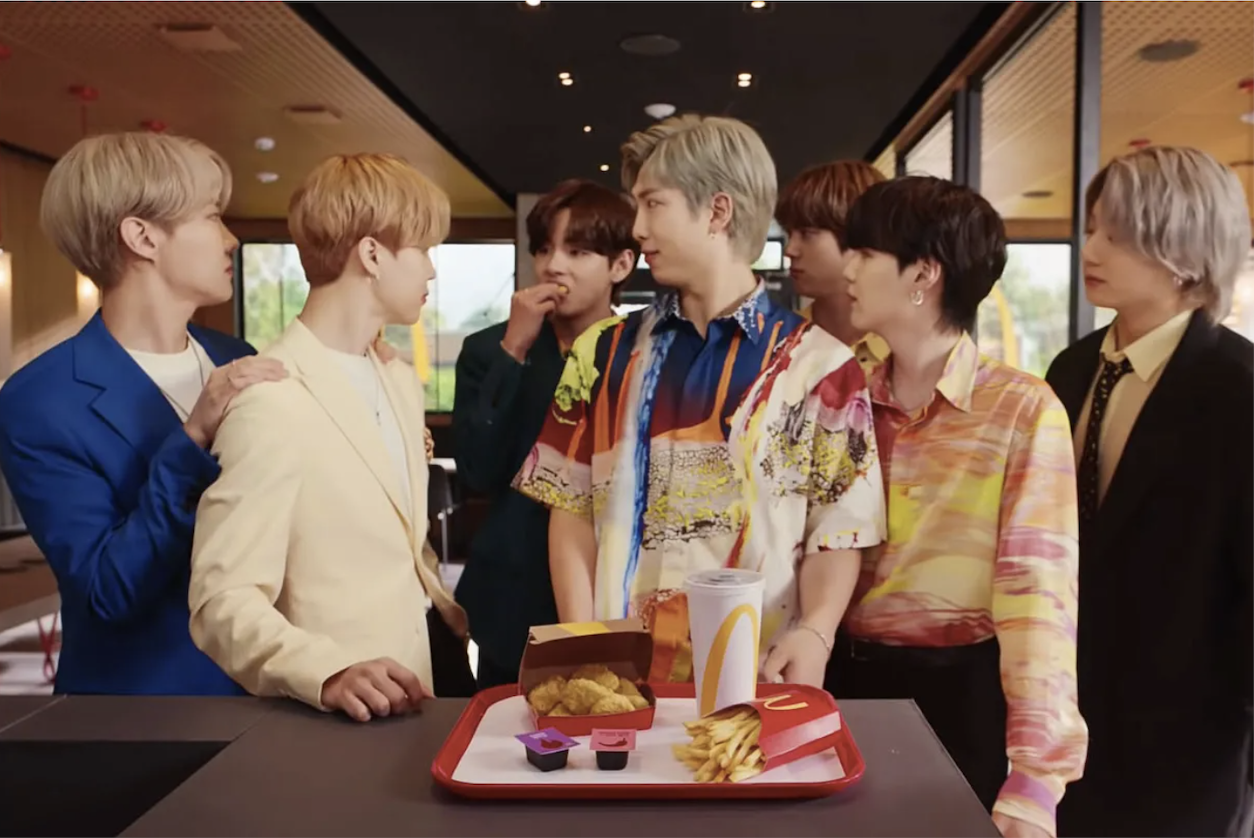
Merchants facing diminishing returns from their paid media strategies can adopt McDonald's approach: leverage recognizable, consistent brand elements, scale through carefully selected partnerships, and deliver precise, data-driven messaging tailored to each audience segment.
1. McDonald's Marketing Strategy and the 4 P's: An Integrated Approach
McDonald's digital marketing strategy consistently offers a great ROI and contributes to lasting customer loyalty by blending four core pillars with product, price, place, and promotion.
Product Strategy: Fast Food Consistency and Innovation
First, McDonald's product strategy is anchored by iconic menu items with consistent food quality - Big Macs, Chicken McNuggets, and fries - that have made it the fast food industry titan that it is today. These stalwarts remain consistent around the globe. Seasonal and market-specific items, like the McRib in the US, keep customers interested and drive a sense of urgency, keeping visits frequent and customer engagement high.
Price Strategy: Cheaper than Burger King
Price strategy mixes value-driven menus with psychological pricing methods. Dollar menus and limited-time offers like "2 for $2" deals tap into perceptions of value and urgency, without damaging customer satisfaction, which promotes immediate action and boosts transaction volume. This approach means McDonald's stays competitive, tempting price-sensitive consumers without compromising margins.
Place Strategy: Localized Marketing
McDonald's place strategy makes use of the franchise model of fast food chains, ensuring local relevance, accessibility, and the ability to rapidly scale upwards. With over 40,000 locations around the world, McDonald's maximizes convenience for customers through offering multi-channel ordering options with drive-thru, in-store, delivery services, and mobile ordering. The result: a frictionless experience that boosts customer retention and lifetime value through providing a trusted local presence and great convenience. This also means that brand visibility is high in almost all the world's major markets.
Marketers can benefit from adopting omnichannel marketing strategies, which are essential for delivering consistent, personalized experiences across all touchpoints. Discover actionable tips on how to implement these strategies.
Promotion Strategy: Personalized Touches From A Fast Food Giant
Mass-marketing and traditional advertisements like TV spots and outdoor ads blend with digital native engagement via social media and digital channels, like their own mobile apps, forming the McDonald's promotion strategy. The McDonald's mobile app, for example, targets consumers with personalized offers and loyalty rewards, directly linking marketing spend to measurable purchases (while strengthening customer loyalty). This closed-loop attribution makes real-time optimization simple and provides a clear ROI, outperforming traditional ad channels that rely on impressions and clicks alone.
Merchants who want to break from legacy digital ad models can adopt this integrated approach for themselves by forging partnerships with fintech firms and developing embedded rewards with the help of Kard. Embedding cash back offers into trusted financial apps can deliver precise targeting, sales lifts, and a transparent ROI, turning marketing budgets into direct, measurable growth drivers.
2. Digital & Social Media: How McDonald's Marketing Strategy Engages Modern Consumers
McDonald's digital marketing strategy makes use of the huge library of first-party customer data generated from their app to make Millennials and Gen Z a key target audience. Investing in a mobile ordering platform and app-based personalization, the MyMcDonald's Rewards turns these consumer insights into targeted offers, driving retention and repeat purchases.
This is amplified by McDonald's social media, which aims to raise cultural relevance among younger, digitally-native audiences. McDonald's successful collaborations, such as the Travis Scott meal, generate viral attention on social media platforms like TikTok, Instagram, and Twitter, leading to a significant real-world impact, including temporary product shortages due to unforeseen demand (which, in turn, created a cultural buzz). These influencer partnerships clearly show McDonald's digital marketing strategy turning into real-world sales and exponential business growth.
Meme-driven marketing efforts have also been a successful pillar of McDonald's strategy, boosting customer interactions on social media platforms. For example, the brand cleverly embraced the viral confusion over the McFlurry spoon by turning it into a humorous promotion, offering free Caramel Brownie McFlurries and sparking positive buzz. By blending humor and authenticity to connect with Gen Z in a relatable way and aligning closely with emerging internet culture and trends, the brand has maintained ongoing relevance with younger audiences
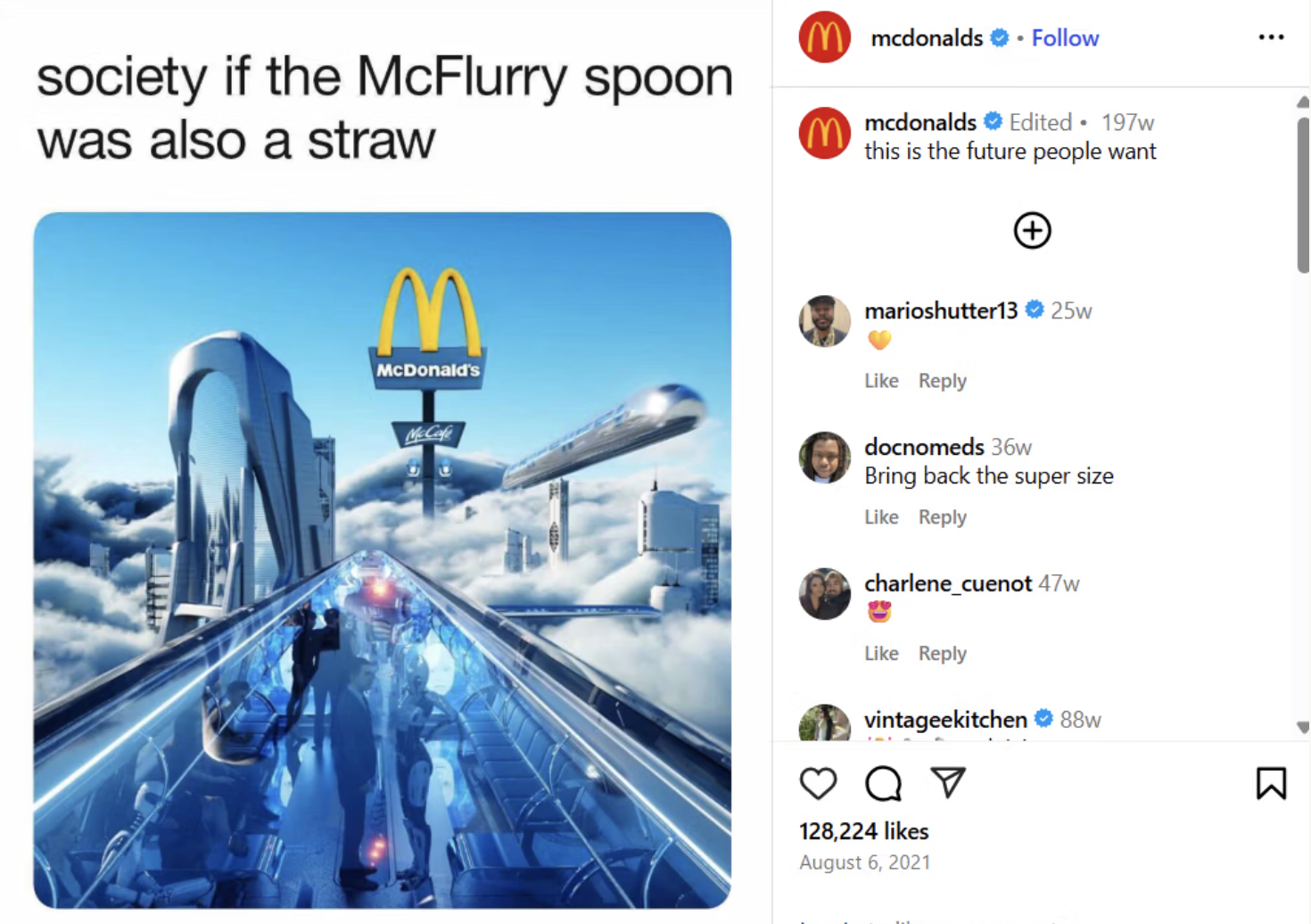
For modern marketers, McDonald's digital strategy demonstrates how combining first-party consumer insights, culturally fluent social campaigns, and measurable digital loyalty programs can effectively boost customer engagement.
Even without owning your own app ecosystem, other businesses can replicate this success by partnering with fintech-powered rewards systems that have access to first-party data. Solutions like Kard allow brands to offer cash back rewards to specific segments of their audience using verified spending data rather than cookies or other third-party metrics.
3. McDonald's Marketing Strategy in Global Markets: Localization & Cultural Adaptation
McDonald's global expansion plan relies on adapting menus, messaging, and campaigns to resonate deeply with local preferences and cultural norms. Rather than applying a one-size-fits-all approach, McDonald's employs a multidomestic marketing approach that prioritizes contextual relevance in each market.
While the classics are always popular, customer preferences change from location to location. McDonald's has embraced this fact by adapting menus, messaging, and marketing campaigns to resonate with these local preferences. Rather than trying to apply a one-size-fits-all approach to a diverse customer base, they employ a multidomestic marketing approach that puts a priority on contextual relevance in each locality.
These localized campaigns are obvious when you compare the US to India. In India, menu offerings include more vegetarian and grilled chicken-based items like the Chicken Maharaja Mac, meeting local dietary traditions and consumer tastes with regional flavors. Similarly, franchises from the fast food chain in the Middle East offer halal-certified menus, catering directly to religious guidelines and consumer demands in the area. These tailored offerings mean McDonald's can build authentic connections and trust by meeting consumer expectations across a diverse global marketplace.
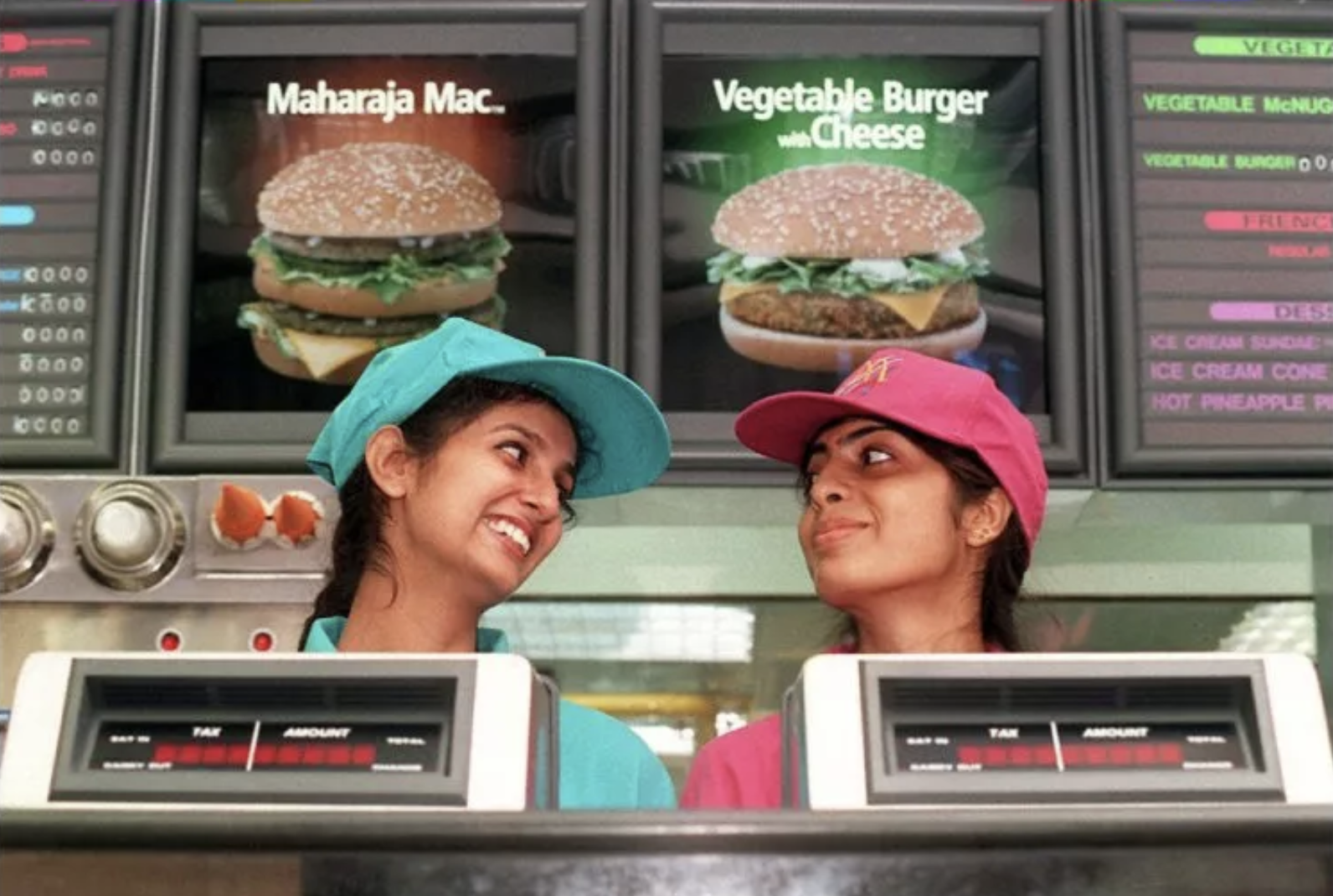
Another prime example of McDonald's international market adaptation is the way it builds emotional resonance. The '#MealsMakeFamilies' campaign illustrates this by emphasizing family togetherness and shared experiences around food - a core value in almost every culture. This family-first messaging strengthens emotional ties, deepens brand loyalty, and drives customer retention across markets.
On the operational side, McDonald's embraces regional partnerships with local franchisees to ensure nuanced execution. These franchisees possess valuable market insights, enabling the brand to adapt quickly and authentically to local consumer behaviors. Not only does this mean that the brand delegates a certain portion of risk, but it also means that it has built-in access to local events, customer expectations, and ensures McDonald's understands what it takes to succeed as a fast food giant in that particular market.
Achieving a similar level of global relevance means taking the lessons of contextual fit displayed by McDonald's success to heart. Just as the fast food titan customizes their menus and campaigns by location, merchants can personalize offer notifications based on precise cardholder spending patterns, holidays, and regional tastes.
4. McDonald's Pricing Strategies: Balancing Value, Psychology, and Competition
McDonald's pricing strategy carefully balances competitive positioning, psychological pricing methods, and dynamic offers to drive increased transaction volumes and foster a sense of time-limited urgency amongst customers around the world.
Benchmarking Against Competitors
Constantly benchmarking against rivals like Burger King and Wendy's, as well as local competitors, allows McDonald's to optimize the price points across regions, ensuring that their menu always appears affordable relative to the competition.
Psychological Pricing to Boost Perceived Value
Psychological pricing methods are employed to boost customers' perceived value. Items are priced at $0.99 rather than $1.00 to trigger subconscious buying impulses, encouraging bigger and more frequent spending. This tactic boosts order size and frequency, especially among budget-sensitive demographics like Gen Z and Millennials.
Limited-Time Offers to Create Urgency
Limited-time offers like the seasonal McRib or promotional deals like "2 for $2" create a sense of urgency, motivating customers to act fast or risk missing out. These FOMO offers flex based on market economics, customer behavior, and regional fast food preferences, further pushing repeat purchases.
Alternative Strategies: Performance-Based Rewards Models
For those who want similar outcomes but don't want to sacrifice margins to traditional discounts, adopting performance-based rewards models like those offered through Kard may make sense. Rather than static discounts, merchants can embed cashback, bonus points, or other perks within financial apps. These targeted incentives prompt immediate action. Like McDonald's dynamic pricing tactics, Kard's embedded rewards campaigns drive urgency and volume, delivering smarter, margin-protecting alternatives to conventional discounts.
5. Product Innovation as a Driver in McDonald's Marketing Strategy
Fast food staples like the Big Mac are balanced with timely product introductions to maintain customer interest. Seasonal items like the Festive Menu create urgency and excitement, prompting loyal customers to revisit frequently and attracting new customers drawn by curiosity.
Health-conscious consumers represent another strategic target for McDonald's innovations. By introducing menu items such as salads, oatmeal, and fruit options, McDonald's proactively responds to changing consumer behaviors and wellness trends. These healthier menu choices help enhance brand perception and sustain long-term customer relationships.
Other brands, particularly QSR marketers, can adopt a similar value innovation strategy through rewards-based triggers. Through Kard, marketers can highlight cashback offers on specific menu items that resonate with particular customer segments, such as budget-conscious Gen Z diners or frequent buyers. Even without launching new products, brands can stimulate purchase frequency and brand affinity using targeted, time-sensitive incentives delivered within trusted financial apps - connecting innovation directly to measurable consumer spending habits.
6. How McDonald's Marketing Strategy Builds Customer Loyalty and Emotional Connections
McDonald's doesn’t just sell food - it builds emotional bonds that keep customers coming back. By tapping into nostalgia and family-oriented experiences, the brand has created lasting emotional connections through offerings like Happy Meals. These kid-friendly meals, complete with collectible toys, have become integral to childhood memories, forging lifelong brand loyalty and repeat visits from parents and children alike.
The launch of MyMcDonald's Rewards further deepens these connections by offering personalized incentives based on actual purchase behavior. Rather than generic discounts, the loyalty program uses real-time data to deliver tailored rewards - free fries, exclusive menu items, or bonus points - making customers feel valued. This behavior-based approach turns transactional moments into personalized engagement opportunities, driving higher customer lifetime value.
McDonald's engagement campaigns continually refresh this emotional link. Promotions like the nostalgic "Adult Happy Meal" collaboration with streetwear brand Cactus Plant Flea Market appeal directly to Millennials and Gen Z, reigniting childhood nostalgia with a culturally relevant twist. Through limited-time offerings and exclusive partnerships, McDonald's maintains relevance with younger demographics, translating emotional resonance into measurable ROI.
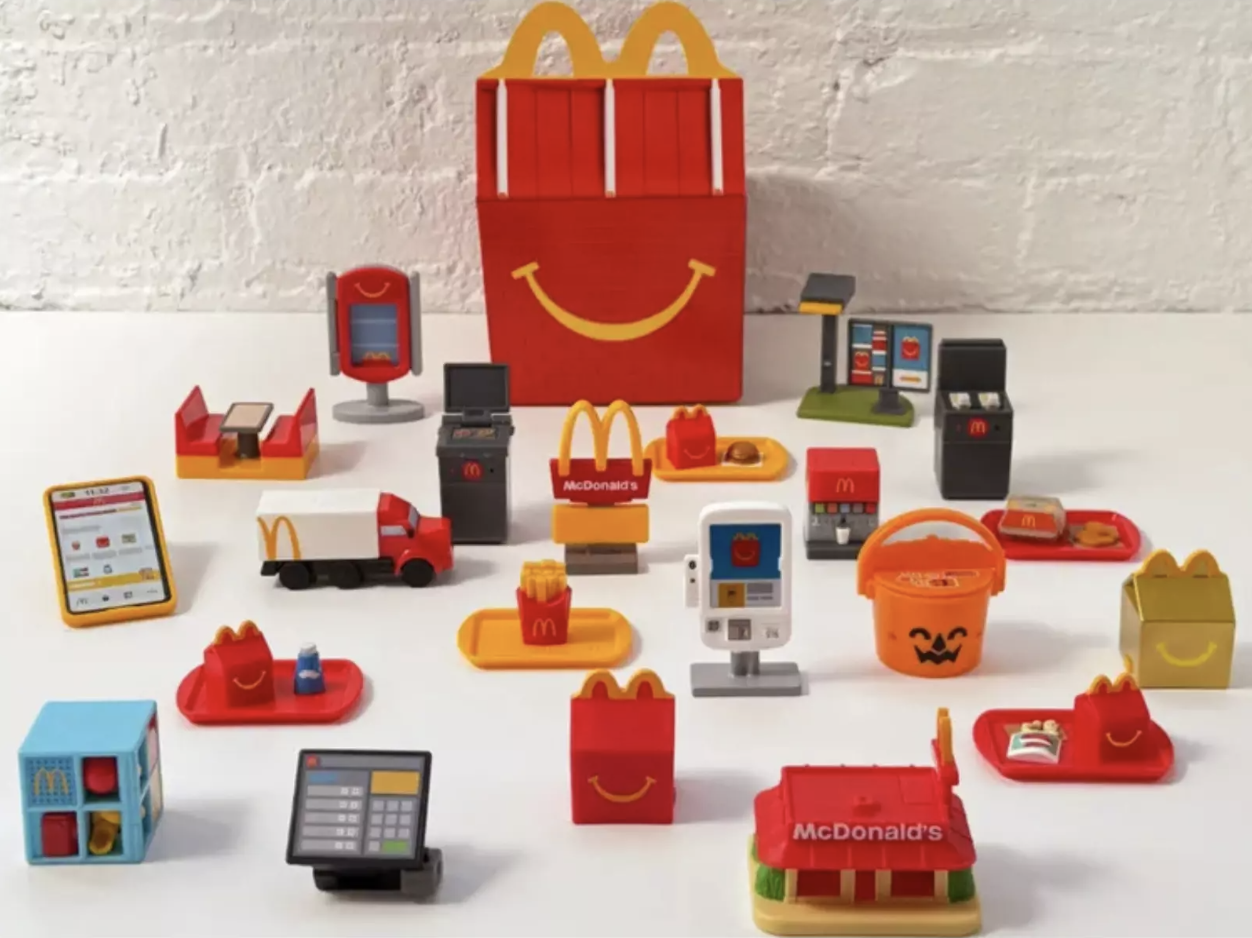
For modern merchants looking to replicate this success, platforms like Kard can be helpful by:
1. Appearing in networks among other similar/popular QSR vendors to build brand awareness
2. Attracting new customers with item or location-based cash back offers
3. Offering a scaled cash back offer (5% off first purchase, 10% off second, 15% off third, etc.) to keep people coming back
By leveraging similar behavior-based rewards models within trusted financial ecosystems, brands can build the same kind of loyalty. Harnessing first-party spend data allows brands to scale emotional connections authentically, driving loyalty and repeat purchases.
7. Evaluating McDonald's Marketing Strategy: Metrics of Success and ROI
McDonald's marketing isn't measured by likes or impressions - it's about real-world outcomes.
Consider the Travis Scott Meal: the influencer-driven promotion didn't just go viral and produce endless user-generated content - it drove tangible results. McDonald's reported a 4.6% increase in same-store sales for the U.S. in Q3 of 2020, largely attributed to the campaign. The meal was so successful that it caused supply shortages, selling out nationwide and creating measurable revenue spikes.
McDonald's capitalized on its closed-loop attribution through its mobile app to directly connect marketing spend with actual consumer transactions. Every coupon redeemed, loyalty point earned, or mobile order placed is tracked, allowing for continuous optimization. Merchants struggling with legacy digital ad platforms, where impressions rarely translate to verifiable sales, can learn from McDonald's data-driven approach.
Specifically, McDonald's tracks the following key elements:
- Incremental Sales Lift: immediate purchase increases tied directly to campaign launches.
- App-Based Loyalty Engagement: Analyzing repeat purchase patterns, average order values, and customer lifetime value from personalized rewards.
- Influencer Campaign Performance: Evaluating direct product sales, store foot traffic, and engagement uplift resulting from strategic partnerships with social media influencers and musicians like BTS or Travis Scott.
These metrics offer actionable insights, enabling McDonald's to pivot quickly and invest confidently.
One recent example of a brand pushing these metrics even further is Fazoli’s collaboration with a challenger bank through Kard. By running an embedded rewards campaign inside a financial app, Fazoli’s was able to reach Gen Z users in a high-trust, high-intent environment, outside of traditional media. The campaign successfully brought in 81% new customers during the offer period. This demonstrates how Kard’s closed-loop infrastructure allows brands to maintain full control over spend and ROI while driving measurable results.
Lessons from McDonald's Marketing Strategy: Valuable Insights for Marketers and Brands
McDonald's offers clear lessons for marketers seeking stronger ROI and deeper customer loyalty.
One key insight: consistency in branding - like the Golden Arches or Ronald McDonald himself - builds instant recognition and trust across diverse markets. Merchants can replicate this by embedding consistent, rewards-driven offers directly where high-intent Gen Z and Millennial consumers already spend - inside trusted financial apps.
Strategic market planning also plays a vital role in McDonald's success. By embracing cultural fluency by adapting menus regionally, they demonstrate the power of contextual relevance. Similarly, merchants can utilize first-party spending data to deliver personalized experiences that resonate, avoiding the fatigue associated with generic paid ads.
Successful competitive market positioning requires data-driven agility. McDonald's quickly adjusts campaigns based on measurable consumer response thanks to data from its app. Brands frustrated by opaque metrics from Google or Meta can adopt similar reward-based channels, shifting budgets toward platforms that transparently attribute performance to real-world transactions and outcomes.
Final Words
McDonald's marketing strategy is a masterclass in balancing global consistency with thoughtful local adaptations.
By seamlessly integrating the 4 P's, leveraging strategic pricing techniques, and embracing digital trends, McDonald's remains culturally relevant and consumer-focused. The brand's commitment to innovation and emotional connections reinforces customer loyalty worldwide.
For marketers seeking sustainable growth and lasting impact, studying the McDonald's marketing strategy provides actionable insights and valuable lessons.
There's a reason millions keep saying "I'm Lovin' It" - the brand truly understands how to resonate globally while connecting locally.
FAQs on McDonald's marketing strategy
Q: What is McDonald's current marketing strategy?
A: McDonald's current marketing strategy blends global brand consistency with localized menu adaptations, digital engagement through personalized rewards and mobile apps, and emotional branding that creates lasting connections to drive customer loyalty.
Q: What are the 4 P's in McDonald's marketing?
A: The 4 P's in McDonald's marketing are Product (core and seasonal menu innovations), Price (value-driven and psychological pricing), Place (strategic franchise locations for accessibility), and Promotion (integrated digital, traditional, and localized marketing campaigns).
Q: Why is McDonald's marketing strategy so successful?
A: McDonald's marketing succeeds due to its strategic combination of globally consistent branding, local market menu adaptations, influential digital campaigns like celebrity collaborations, and value-based pricing, all effectively resonating with diverse consumers worldwide.
Q: How does McDonald's adapt its marketing strategy in different countries?
A: McDonald's adapts its global strategy through localized products, regionally tailored campaigns (like India's "#MealsMakeFamilies"), and cultural sensitivity, ensuring their offerings and messaging resonate with local consumer preferences.
Q: What digital marketing strategies does McDonald's use to engage younger consumers?
A: McDonald's engages younger consumers through dynamic digital strategies, including celebrity collaborations like the Travis Scott Meal, personalized app-based loyalty rewards, and a proactive social media presence, consistently driving engagement and cultural relevance.
